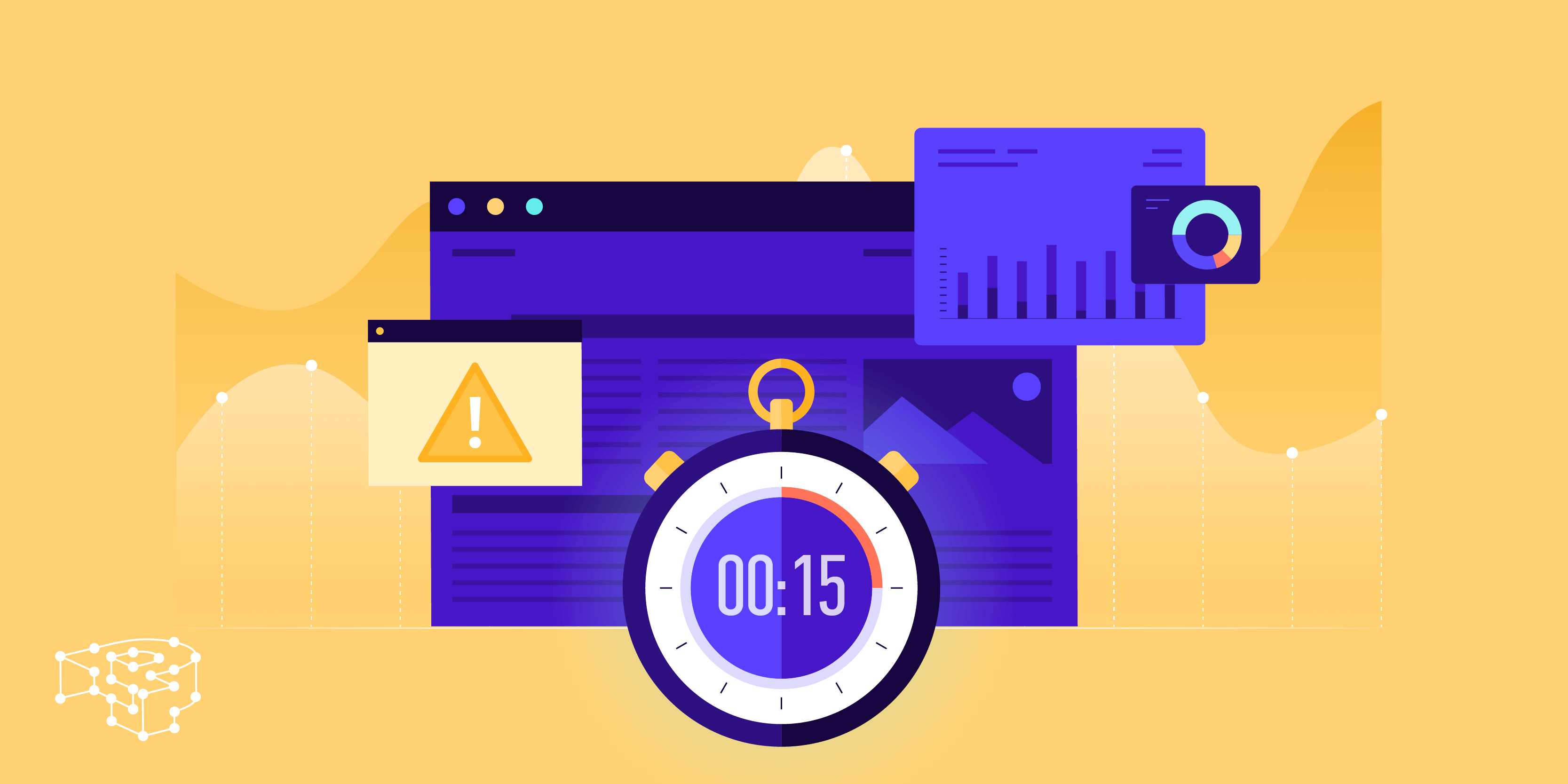Top Website Monitoring Tools for Small Businesses
Explore the best website monitoring tools that can help your small business stay online and perform well.
Posted by
 Sabyr Nurgaliyev
Sabyr Nurgaliyev
Table of Contents
- Introduction
- 1. Why Website Monitoring Matters
- 2. What to Look for in a Monitoring Tool
- 3. Top Website Monitoring Tools
- 4. Setting Up Your Monitoring Tool
- 5. How to Get the Most Out of Your Monitoring Tool
- 6. Frequently Asked Questions
- Conclusion
Introduction
If you own a small business, your website is like your online store. It's where people come to learn about your business and maybe even buy things. But what if your website stops working? You could lose money, and your customers might get upset. That's why it's important to keep an eye on your website and make sure it's always working.
This is where website monitoring tools come in. These tools check your website all the time to make sure everything is working right. If something goes wrong, they let you know so you can fix it fast.
In this article, we'll talk about why website monitoring matters for small businesses, what to look for in a monitoring tool, and some of the best tools out there. We'll also give you tips on setting up your tool and making the most of it.
1. Why Website Monitoring Matters
Keeping Your Business Running Smoothly
Your website is like the front door of your business online. If that door is closed, people can't get in. When your website goes down, it means customers can't see your products, learn about your services, or make a purchase. This can lead to lost sales and unhappy customers.
Protecting Your Reputation
When your website isn't working, it can hurt how people see your business. If customers try to visit your site and find that it's down, they might think your business isn't reliable. This can make them go to your competitors instead.
Improving Customer Experience
A good website monitoring tool doesn't just check if your site is up. It also looks at how well your site is working. Is it loading quickly? Are there any errors? By knowing these things, you can make sure your customers have a smooth experience on your site.
2. What to Look for in a Monitoring Tool
Reliability
You want a tool you can count on. It should check your site often and let you know right away if something's wrong.
Ease of Use
Running a small business is busy work. You don't have time to learn complicated tools. Look for something that's easy to set up and use.
Custom Alerts
A good tool lets you choose how and when you get alerts. Maybe you want an email or a text message if your site goes down. Or maybe you only want alerts if your site is down for more than 5 minutes.
Detailed Reports
It's important to see not just if your site is down, but why it went down and how often it happens. Detailed reports help you understand what's going on so you can fix problems and make your site better.
Affordability
As a small business, you have to watch your budget. Look for a tool that fits your needs without costing too much.
3. Top Website Monitoring Tools
Here are some of the best website monitoring tools for small businesses:
UptimeFriend
- How Well It Works: Very reliable and easy to use.
- Custom Alerts: Offers email, text, and Slack notifications.
- Detailed Reports: Provides insights on uptime, response time, and errors.
- Cost: $5 - $20 per month, making it affordable for small businesses.
Pingdom
- How Well It Works: Very accurate with advanced features.
- Custom Alerts: Allows for highly customizable alerts.
- Detailed Reports: Offers in-depth reports on performance and downtime.
- Cost: $15 - $100 per month, depending on features.
StatusCake
- How Well It Works: Reliable and offers a free plan.
- Custom Alerts: Basic alert options, suitable for most small businesses.
- Detailed Reports: Simple but effective reports.
- Cost: Free - $20 per month, with a free plan available.
Uptime Robot
- How Well It Works: Good for basic monitoring with a free plan.
- Custom Alerts: Email and SMS alerts.
- Detailed Reports: Limited but useful for small sites.
- Cost: Free for basic features, $5 - $10 per month for more options.
4. Setting Up Your Monitoring Tool
Step 1: Sign Up
Choose the tool that best fits your needs and sign up. Most tools offer a free trial or a free plan to get started.
Step 2: Add Your Website
After signing up, you'll need to add your website to the tool. This usually involves entering your website's URL and choosing what you want to monitor (like uptime, response time, or specific pages).
Step 3: Set Up Alerts
Next, set up your alerts. Decide how you want to be notified if something goes wrong. You can usually choose between email, text, or even integrations with tools like Slack.
Step 4: Customize Your Monitoring
Many tools let you customize what you monitor and how often. For example, you might want to check your homepage every minute, but other pages every 5 minutes.
Step 5: Review Reports
Once your tool is set up, start reviewing the reports it generates. Look for patterns in downtime or slow response times so you can fix any issues.
5. How to Get the Most Out of Your Monitoring Tool
Regularly Review Reports
Don’t just set it and forget it. Regularly check your reports to catch any issues early.
Optimize Your Website
Use the data from your monitoring tool to improve your website. If you notice slow loading times, you might need to optimize images or update your hosting plan.
Update Your Alerts
As your business grows, you might need to update how you get alerts. Maybe you want more frequent checks or alerts sent to multiple team members.
Stay Informed
Website monitoring tools often release new features or updates. Make sure to stay informed about these changes so you can take full advantage of your tool.
6. Frequently Asked Questions
What Is Website Uptime?
Uptime refers to the amount of time your website is available and working correctly. A high uptime percentage means your site is rarely down.
How Often Should I Monitor My Website?
It depends on your site and business needs. Busy websites might need monitoring every minute, while smaller sites might be fine with checks every 5 or 15 minutes.
Can Monitoring Tools Help with Website Speed?
Yes, many monitoring tools also track how fast your site loads. This can help you identify and fix slow pages, improving user experience.
Are Free Monitoring Tools Reliable?
Free tools can be a good starting point, but they often have limitations. As your business grows, you might need a paid tool for more features and reliability.
Conclusion
Website monitoring is essential for small businesses. By choosing the right tool and setting it up correctly, you can keep your site running smoothly, avoid downtime, and provide a better experience for your customers.
Remember to regularly review your monitoring reports, optimize your site based on the data you collect, and update your alerts as needed. This will help you get the most out of your monitoring tool and ensure your website is always ready for your customers.
Related Articles

Explore the top website monitoring services that can help small businesses maintain optimal performance and minimize downtime.
 Sabyr NurgaliyevAug 11, 2024
Sabyr NurgaliyevAug 11, 2024
Master website performance monitoring with proven techniques, tools, and strategies to optimize server reliability and minimize downtime.
 Sabyr NurgaliyevNov 29, 2024
Sabyr NurgaliyevNov 29, 2024
Practical steps and strategies for implementing effective website monitoring systems to maintain optimal server performance
 Sabyr NurgaliyevNov 24, 2024
Sabyr NurgaliyevNov 24, 2024
Learn advanced techniques for monitoring website uptime, preventing server downtime, and optimizing digital infrastructure performance.
 Sabyr NurgaliyevNov 23, 2024
Sabyr NurgaliyevNov 23, 2024
Explore cutting-edge strategies for monitoring website uptime, including advanced tools, performance optimization, and proactive reliability techniques for digital infrastructure.
 Sabyr NurgaliyevNov 20, 2024
Sabyr NurgaliyevNov 20, 2024
Master sophisticated website uptime monitoring techniques, exploring cutting-edge tools, advanced metrics, and strategic implementation for maximum digital reliability.
 Sabyr NurgaliyevNov 19, 2024
Sabyr NurgaliyevNov 19, 2024